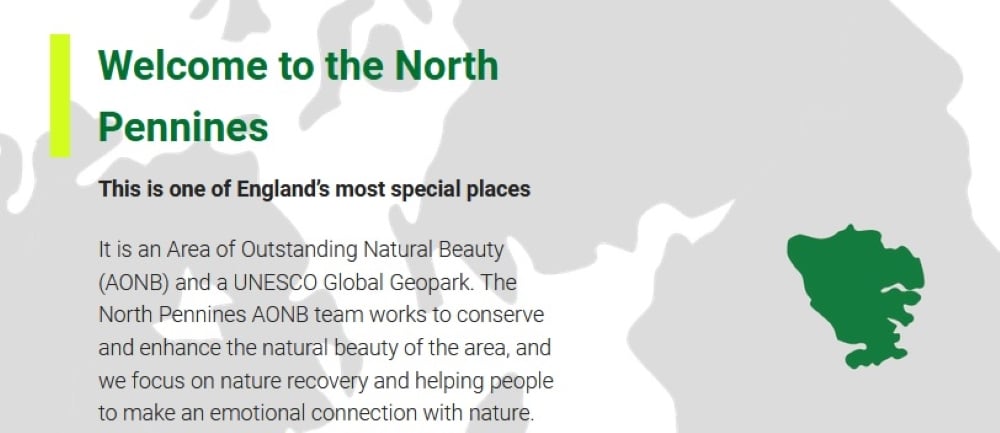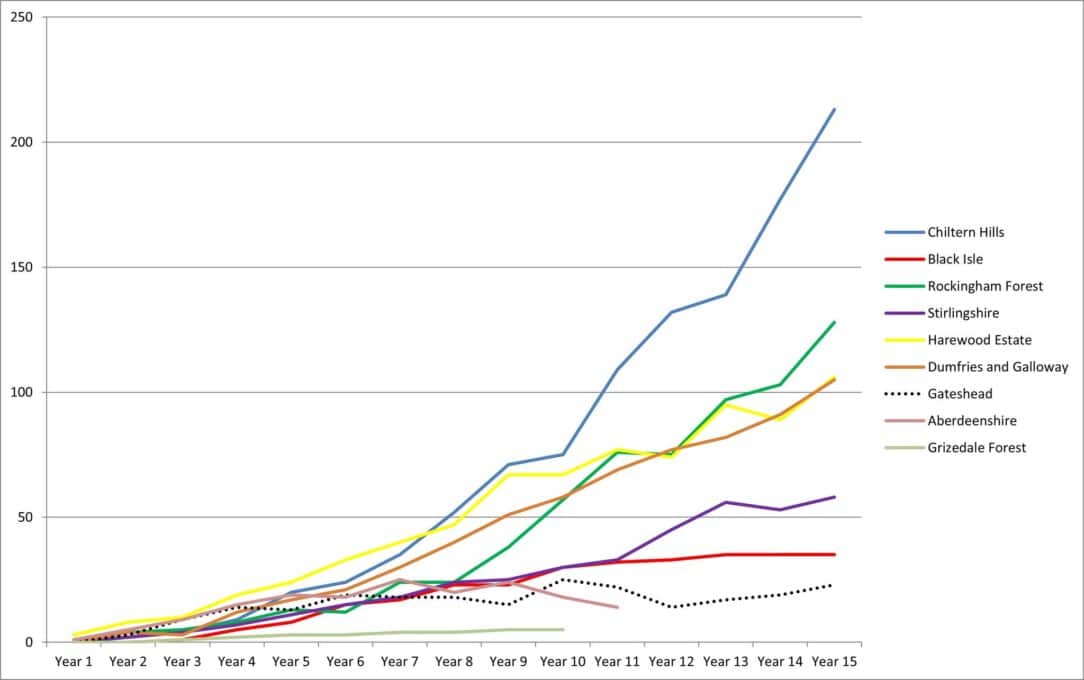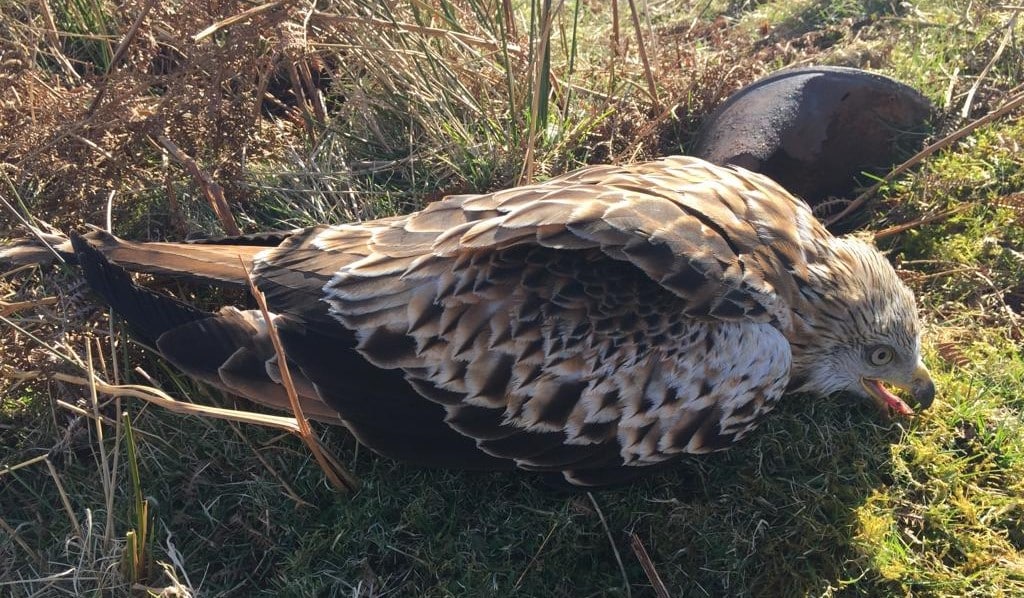The RSPB has said that a Red Kite found this month peppered with lead shot in Edmundbyers, County Durham is currently fighting for their life in a bird hospital.
This is the second report of a shot Red Kite in just a few days, following news that a witness saw a Red Kite being shot on a grouse moor near Grantown-on-Spey. In their statement about that incident Police Scotland appealed for information about ‘quad bikes’, the usual mode of transport for gamekeepers on moorland shooting estates.
Red Kites are fully protected by the Wildlife and Countryside Act 1981, but have become targets on shooting estates as their previously very low numbers begin to rebound after decades of conservation. Some shooting lobbyists have talked ominously about there being ‘too many’ Red Kites now, and crimes against them appear to be on the rise.
Gratitude to member of public who reported this crime
In this latest incident the RSPB report that
A member of the public noticed the bird at the side of a public footpath along Burnhope Burn on 17 March 2023 and reported it to the RSPB. Arriving on the scene, RSPB Investigations Officers found the Red Kite hiding in bracken, alive but unable to fly.
It was taken to a wildlife rehabilitator and looked over by a vet. An X-ray revealed the bird’s entire body was peppered with shot including pieces that had broken its wing.
Jack Ashton-Booth, RSPB Investigations Officer, said:
The kite is currently receiving the best care, and we understand it has been hopping up onto a perch and feeding itself. However it’s still not out of the woods. We are incredibly grateful to the diligent member of the community who noticed and reported the bird, and urge anyone else who finds a dead or injured bird of prey in suspicious circumstances to do the same. It could save a bird’s life and help us identify a raptor killer at large. We are also hugely grateful to Jean Thorpe, who is caring for the bird, as she has done so many others.
It’s unlikely this Red Kite will have flown far from where it was shot. If you have any information about who might have done this, or know of anyone shooting birds of prey in this area, please get in touch.
North Pennines AONB persecution hotspot
The area that the Red Kite was found in is part of the North Pennines Area of Outstanding Natural Beauty (AONB). It is dominated by grouse shoots and is a known raptor persecution hotspot.
That’s not how the authorities like to portray the AONB of course…

In 2020 two Red Kites fitted with satellite tags unexpectedly and inexplicably vanished in the same area: one tag sent its last fix from the Derwent Gorge, the other from a grouse moor near Derwent Reservoir. And in 2021 another Red Kite was found dead near Edmundbyers, a victim of illegal poisoning. No one has been prosecuted in either case.
Commenting on this latest incident, Friends of Red Kites (FoRK), a voluntary monitoring and community engagement organisation based in the North East, said:
“We are sickened to hear that yet another Red Kite has been found on the moorlands of the North Pennines suffering from illegal persecution. Since the re-introduction of Red Kites to the North East of England in 2004, a number of birds have been found dead on or adjacent to these moorlands which are managed for grouse shooting. After nearly 20 years the population of breeding kites has barely advanced above 20 pairs. By comparison, populations of kites in other areas where they have been released, like the Chilterns, are booming. It is a sad indictment on parts of society that the people of the North East are denied seeing these beautiful birds gracing our skies more widely.”
The group have backed up those words with a graph posted on their Facebook page which shows the estimated number of breeding pairs over a 15-year period after each reintroduction has taken place. It starkly illustrates how tenuous the survival of Red Kites in this grouse-moor-dominated area really is.

Copyright Friends of Red Kite (FoRK)
As we have said repeatedly on this site, it is not up to the shooting industry to decide when there are ‘enough’ or ‘too many’ Red Kites, and the industry should most certainly not be dictating where and which species of raptor grace our skies.
- Featured image of the shot Red Kite/RSPB

